Inside The New York Botanical Garden
hawk
Posted in Photography on December 8 2015, by Patricia Gonzalez
Patricia Gonzalez is an NYBG Visitor Services Attendant and avid wildlife photographer.
The raptors of the Garden provide a who’s who of talented hunters, all of them beautiful additions to NYBG’s wildlife.
This slideshow requires JavaScript.
Photos by Patricia Gonzalez
Posted in Photography, Wildlife on March 16 2015, by Patricia Gonzalez
Patricia Gonzalez is an NYBG Visitor Services Attendant and avid wildlife photographer.
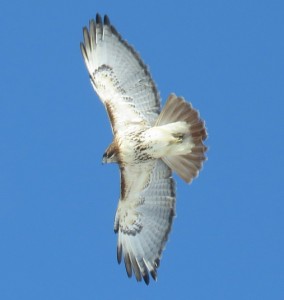 This year marks the eighth year that I’ll be photographing wildlife here at the New York Botanical Garden. I first began visiting the Garden grounds in 2008. I was so impressed with all the different types of wildlife that I soon became a Member. In 2012, I signed on as a Volunteer Greeter with Visitor Services. Later that same year, I was asked to join them as staff. The rest, as they say, is history.
This year marks the eighth year that I’ll be photographing wildlife here at the New York Botanical Garden. I first began visiting the Garden grounds in 2008. I was so impressed with all the different types of wildlife that I soon became a Member. In 2012, I signed on as a Volunteer Greeter with Visitor Services. Later that same year, I was asked to join them as staff. The rest, as they say, is history.
During all this time, I’ve never stopped shooting. I bring my camera to work every day and try to do some shooting before and after my shift. I also visit the Garden on my days off to get in some extra daylight. Naturally, I have an advantage working at the Garden as I can get in before we open to the public. This leaves entire swaths of the Garden all to myself. Through the years, I’ve had the pleasure of meeting some amazing members of the animal kingdom. Here are a few of them.
Read More
Posted in Around the Garden, Photography on January 10 2013, by Matt Newman
It’s seldom we get to show off the other raptor residents of the NYBG, but with the Great Horned Owls and the Red-tailed Hawks so ready to snap up the spotlight, it’s not too surprising. Thankfully, Pat Gonzalez has her eye out when everyone else is preoccupied; this Cooper’s Hawk seems all too willing to strike a regal pose for her lens.
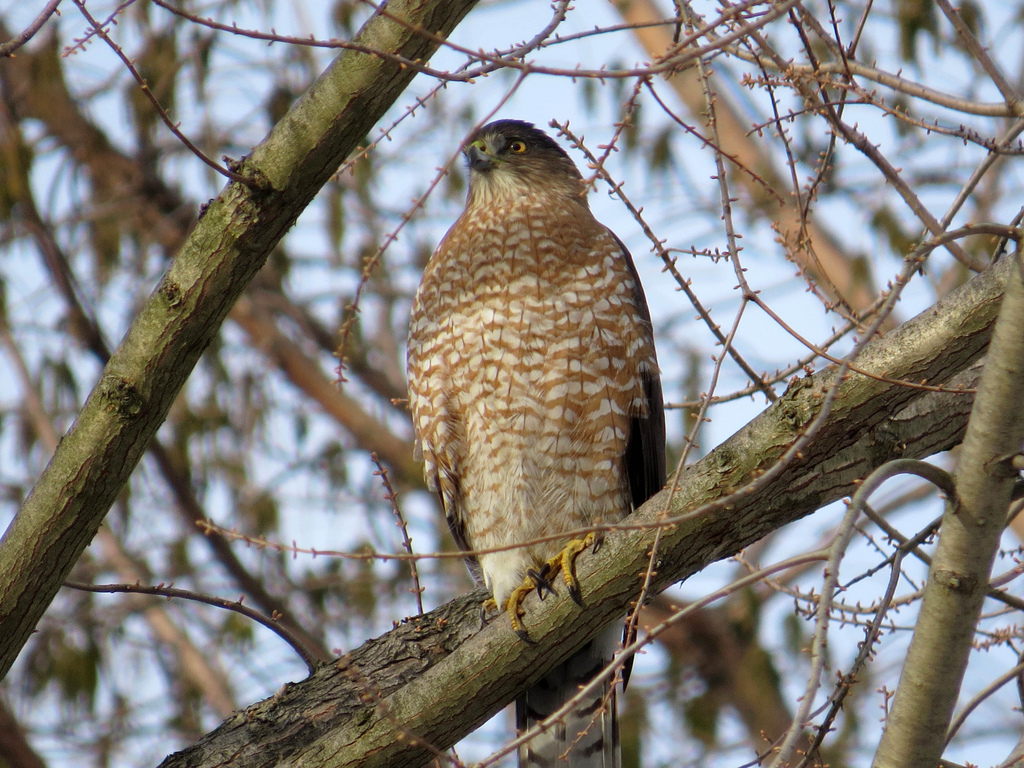
Photo by Patricia Gonzalez
Posted in Wildlife on April 14 2009, by Plant Talk
  |
Wayt Thomas is the Elizabeth G. Britton Curator of Botany in the Institute of Systematic Botany. Stella Sylva is Administrative Curator in the William and Lynda Steere Herbarium. |
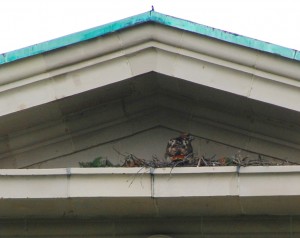 The pair of red-tailed hawks (Buteo jamaicensis) nesting on the Library building appear to be consistently present at the nest although the female is usually not visible when sitting. So, although we cannot say for sure, it is likely that she has laid eggs and is brooding.
The pair of red-tailed hawks (Buteo jamaicensis) nesting on the Library building appear to be consistently present at the nest although the female is usually not visible when sitting. So, although we cannot say for sure, it is likely that she has laid eggs and is brooding.
Their nest is in a small triangular alcove near the top of the front face of the building on the east side (see photos). The close-up photo captures the female stretching her wings and preening herself. Afterward, she went back to the middle of the nest, hunkered down, and disappeared from view. If all goes well, the eggs will hatch sometime this month. We’ll keep you posted when we find out more.
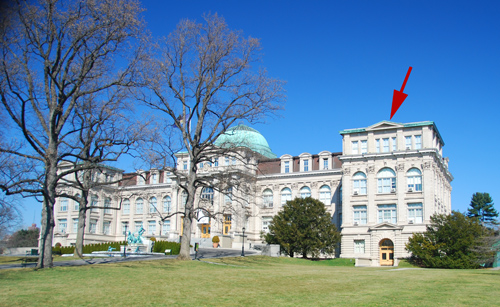
Photos by Wayt Thomas
Posted in Wildlife on March 24 2009, by Plant Talk
  |
Wayt Thomas is the Elizabeth G. Britton Curator of Botany in the Institute of Systematic Botany. Stella Sylva is Administrative Curator in the William and Lynda Steere Herbarium. |

Photo by Tony KirchgessnerFor the past several weeks a pair of red-tailed hawks (Buteo jamaicensis) has been building a nest on the Library building. Their nest is in a small triangular alcove near the top of the front face of the building on the east side (see photos)—they swoop by our office windows on their way to and from the nest.
Last year they started building a nest here but changed their mind and went elsewhere—Fordham University, according to Debbie Becker, who leads the Saturday morning bird walks at the Botanical Garden. This year the hawks seem to be serious. Two weeks ago they were engaged in a very active courtship display and mated several times a day.
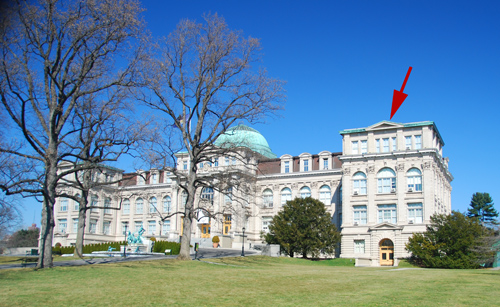
Photo by Wayt ThomasRed-tailed hawk pairs are monogamous, with females (2–4.5 lbs.) larger than males (1.5–3 lbs). The adults have a dark brown back with a pale underbelly and a darker band across the belly; the tail is brick-red above and pinkish below. Our pair is unusual in that they are accompanied by a third hawk—rarely, a second female may help tend the nest and feed the young. This immature bird is an offspring of the pair’s from last year. If everything proceeds according to what we know about these hawks, 1 to 3 eggs will be laid in late March or April—we’ll keep you posted.
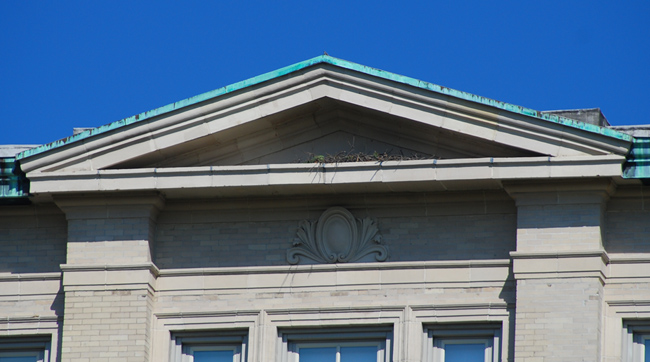
Photo by Wayt ThomasRed-tailed hawks usually feed on small mammals or birds and their preferred habitat is a mix of forest and open areas, such as we have here on the Garden grounds. Their diet consists primarily of squirrels, pigeons, small birds, and rabbits. We don’t know if they are part of the Garden’s Integrated Pest Management plan, but there are fewer squirrels than usual in front of the Library building.





 The
The 


